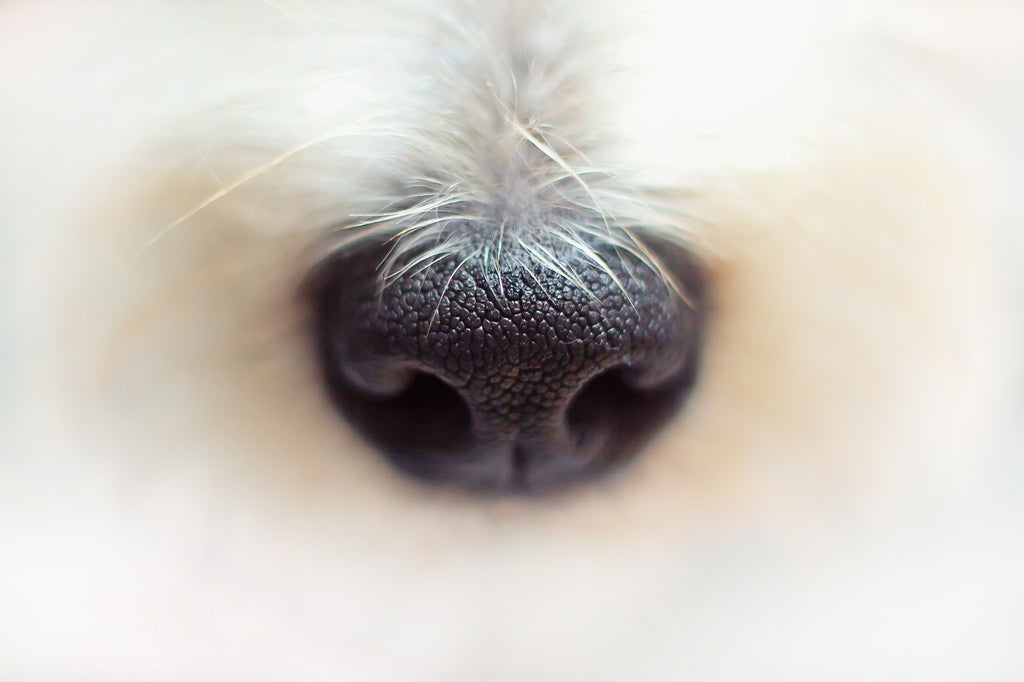Beyond Sniffing: Something You Don't Know About Dog Nose
When we think of a dog's nose, we often associate it with their incredible sense of smell. However, the wonders of the dog nose go far beyond detecting scents. From temperature regulation to communication and even health indicators, dogs possess an array of fascinating abilities associated with their noses. Prepare to be amazed as we uncover the hidden secrets of the canine olfactory system!

🐕 A Dog Nose is A Thermoregulation.
While dogs primarily rely on panting to cool themselves down, their noses also play a role in regulating body temperature. The nasal passages contain numerous blood vessels that help dissipate heat when the dog's body temperature rises. As the dog inhales, the air passing through the nose is cooled by the blood vessels, reducing the overall body temperature.
🐕 Dogs Have Unique Nose Prints.
Similar to human fingerprints, each dog has a unique nose print. The patterns and ridges on a dog's nose are distinct and can be used for identification, much like a fingerprint. This distinct feature has been utilized in some countries for identification purposes, particularly in dog licensing and legal documentation.
🐕 Dog Noses Are Enhanced Air Filtration.
Dogs have an exceptional ability to filter the air they breathe. Their noses are equipped with specialized structures, including turbinates, which increase the surface area inside the nasal cavity. These structures help trap dust, pollen, and other airborne particles, preventing them from entering the lungs and providing cleaner air for the dog.
🐕 Dog Noses Help Scent Communication.
While we know dogs can detect and interpret a wide range of scents, their noses also play a crucial role in scent-based communication. Dogs have scent glands located on their paw pads, which leave behind unique scent markers as they walk. These scent markers contain information about the dog's identity, territory, and reproductive status, allowing them to communicate with other dogs through sniffing.
🐕 A Dog Nose is An Indicator of Health
A dog's nose can often provide insight into their overall health. Although the old adage that a warm and dry nose signifies illness is not always accurate, changes in the nose's moisture levels or color can be an indication of certain health conditions. For example, a consistently runny or excessively dry nose may warrant a visit to the veterinarian for further evaluation.
🐕 Dog Noses can Detect Chemical Changes
Dogs have been trained to detect chemical changes in various scenarios. For instance, some dogs have been trained to detect fluctuations in blood sugar levels in individuals with diabetes, providing early warning signs of hypoglycemia or hyperglycemia. Additionally, dogs have been used to identify the presence of certain substances, such as drugs or explosives, due to their remarkable ability to detect specific odors.
The dog nose is a remarkable organ, far more than just a tool for scent detection. Dogs' noses are finely tuned instruments that contribute to their thermoregulation, filtration of air, communication with other dogs, and even serve as potential health indicators. Understanding and appreciating the multifaceted capabilities of the dog nose allows us to deepen our bond with these incredible animals. As we continue to unveil the remarkable powers of the canine olfactory system, we gain a greater appreciation for the complex and intricate nature of our four-legged companions.